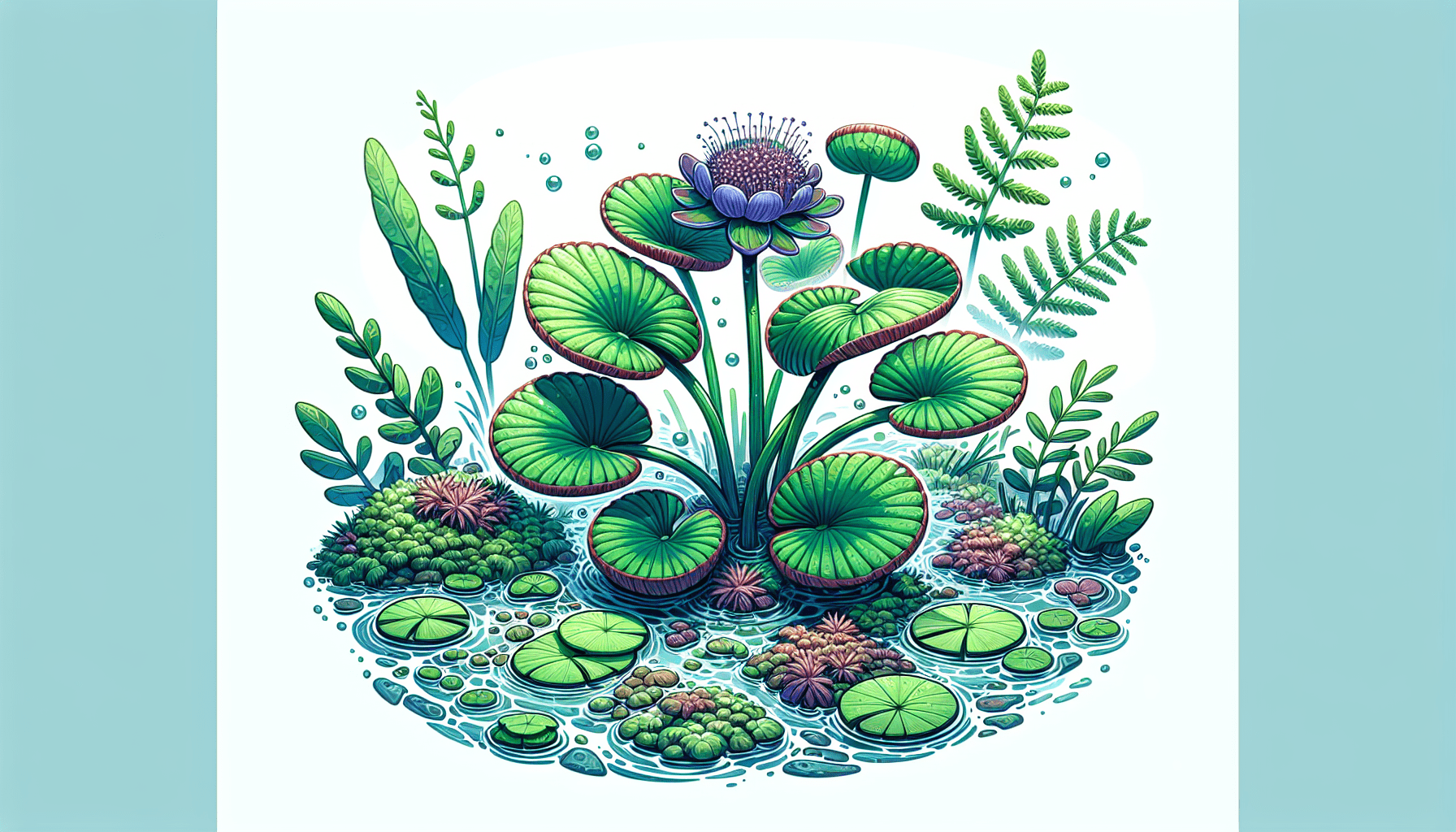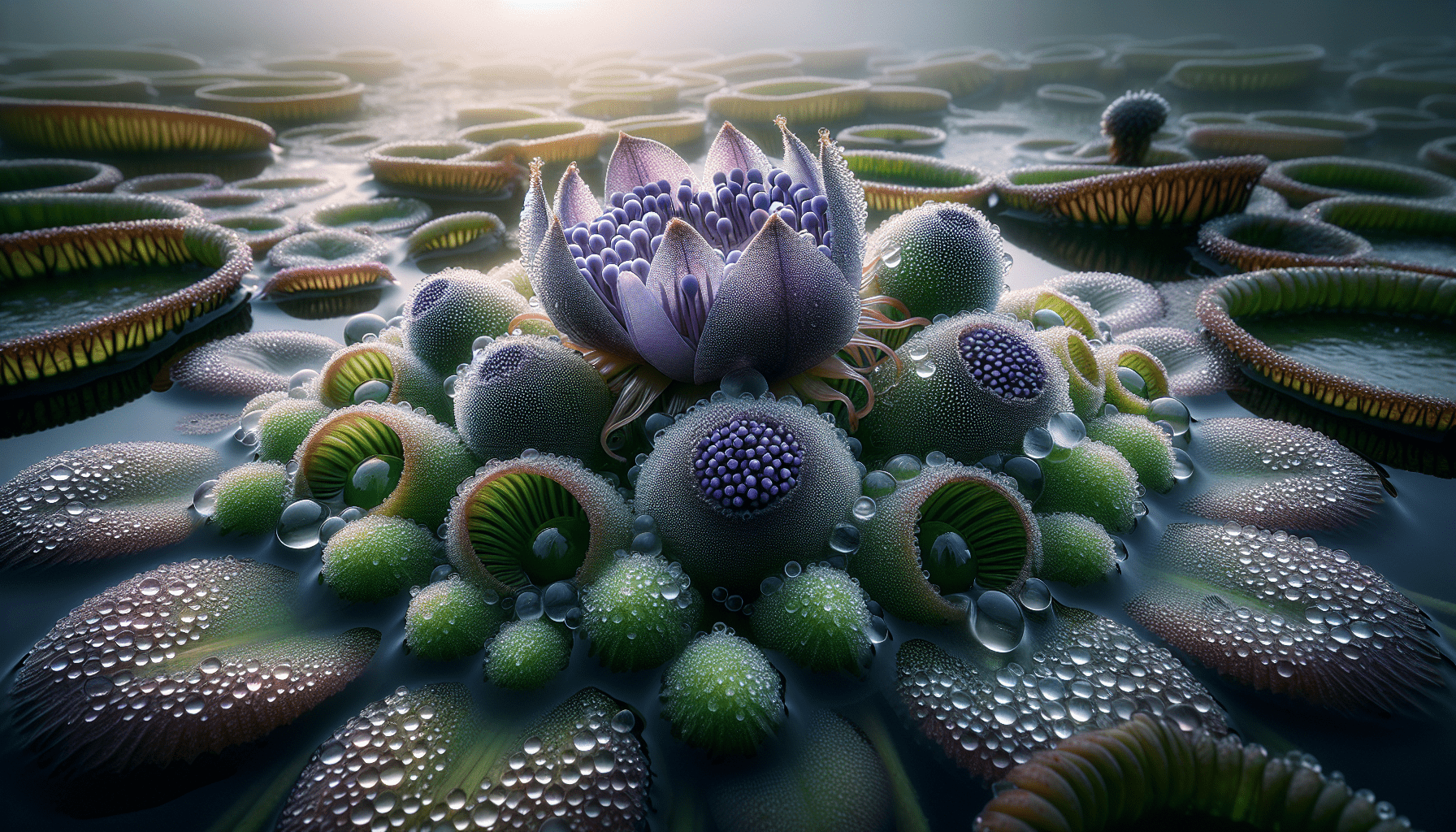In your pursuit to understand more about the intriguing world of aquatic flora, perhaps you’ve stumbled upon the term ‘Brasenia.’ In the subsequent article, your curiosity about this elusive and largely understudied aquatic weed will be addressed in a comprehensive yet digestible manner. This aquatic plant species, known to the scientific community as ‘Brasenia,’ will be unraveled for your better understanding of its unique ecology, environmental role, and potential uses. While it may seem insignificant, it plays an integral role in diverse ecosystems and is granted due recognition in the forthcoming discourse.
Description of Aquatic Weed Brasenia
Brasenia, often known as watershield or aquatic shield fern, is a unique type of aquatic weed that is known for its fascinating characteristics.
Physical Characteristics
You would commonly identify Brasenia with its small, shield-like floating leaves that are dark green in color. These leaves typically grow up to around 10 cm in diameter and have long stems that stretch down to anchor themselves in the soft mud of lakes, ponds, or slow-moving streams. The young leaves and buds of this plant are coated in a thick clear jelly-like substance which is thought to have antimicrobial properties to protect the plant from parasites.
Habitat
The habitat of Brasenia primarily comprises lentic freshwater settings such as ponds, slow rivers, and lakes. It thrives in still or slow-moving nutrient-rich (eutrophic) waters and slightly acidic to neutral pH values. Depending upon its environmental conditions, Brasenia can grow in depths up to 2 meters.
Geographical Distribution
Moving on to its geographical distribution, Brasenia is not bound by continent barriers. You can find this species throughout North America, Central America, certain parts of South America, Asia, and even in Australia and New Zealand.
Scientific Classification of Brasenia
To give you a better understanding of where Brasenia fits in the larger plant kingdom, we will review its scientific classification.
Kingdom
Brasenia belongs to the Kingdom Plantae, which encompasses all the green plants, from the microscopic algae to the giant sequoia trees.
Order
Going further down, the plant falls under the Order Cabombales, an order distinguished by its almost entirely aquatic habit.
Family
In terms of Family, Brasenia is nested within the Cabombaceae, dubbed the “watershield family,” which closely ties to the plant’s common name.
Genus
The panorama of Genus showcases Brasenia as the only member, making it monotypic in this respect.
Species
When it comes to species, Brasenia is represented by a single species known as Brasenia schreberi.

Common Names of Brasenia
Like many plants, Brasenia is known by several common names that vary by region and culture.
Names in Different Languages
In English-speaking countries, Brasenia is usually known as “watershield.” Japanese-speaking natives call it “Onibasu” whereas in China, it is referred to as “Lingjiao lotus.”
Cultural References
Culturally, Brasenia is often referenced in poetry and folklore and is culturally important in various cuisines. For instance, it has been the inspiration behind works of art in China and forms an integral part of Aboriginal legends in Australia.
Life Cycle of Brasenia
Understanding the life cycle of Brasenia allows us to gain insights into its survival techniques and its impact on the local environment.
Growth Stages
Brasenia begins its life as a seed in the spring, germinating into a seedling and then growing into a full plant over the summer months. As autumn progresses, the plant’s above-water portions die back, leaving the rhizomes (root-like stems) to survive the cold winter months.
Reproduction and Propagation
Brasenia reproduces both sexually, via small purple flowers that produce seeds, and vegetatively, through the extension and breakage of rhizomes. The floating seeds are dispersed by water currents and can remain viable for up to several years.

Photosynthetic Process in Brasenia
Like all green plants, Brasenia undergoes photosynthesis to produce energy.
Light Requirement
Brasenia, being an aquatic plant, has evolved to perform photosynthesis at low light levels, allowing it to survive in shaded water bodies or at greater depths. It requires sunlight primarily for the process of photosynthesis, to assimilate carbon dioxide and create oxygen and glucose.
Chlorophyll Content
Given its lush green leaves, it is evident the plant contains significant amounts of chlorophyll, the molecule responsible for capturing sunlight.
Role in Oxygen Production
Through the process of photosynthesis, Brasenia plays an essential role in producing oxygen, consequently influencing the aquatic environment’s oxygen levels.
Adaptations of Brasenia
Brasenia has not survived by chance. Over time, the plant has adapted in several ways to ensure its survival in a wide range of conditions.
Structural Adaptations
The jelly-like coating on immature leaves helps keep away herbivorous insects. The plant’s sturdy rhizomes not only help it overwinter but also allow it to spread under suitable conditions.
Behavioural Adaptations
Brasenia has a unique growth pattern where it maximizes the intercepted light by positioning its floating leaves on the water surface. This ensures efficient photosynthesis under low light conditions.
Uses of Brasenia
Despite being categorized as a weed, Brasenia has its share of usefulness.
Culinary Uses
People often consume young leaves and stems of Brasenia as a vegetable in various Asian cuisines. The plant’s jelly-coating was also traditionally used as a thickening agent in making soups.
Medicinal Uses
Brasenia has a long history of use in traditional medicine, primarily in eastern Asia, for treating ailments like inflammation and enteritis.
Aesthetic Uses
With their dark-green, round, reflective leaves, and beautiful purple flowers, Brasenia plants provide aesthetic appeal and are sometimes cultivated in ornamental water gardens.
Negative Impacts of Brasenia
Despite the aforementioned utility, Brasenia can also harbor negative implications if left unchecked.
Invasion and Competition with Native Species
If allowed to spread out of control, Brasenia plants can overtake water bodies, blocking out light for other submerged plants and causing a significant reduction in aquatic biodiversity.
Effects on Aquatic Ecosystems
By extensively growing, Brasenia could potentially reduce recreational usage of water bodies and disrupt aquatic ecosystems negatively by manipulating the oxygen levels and nutrient cycling.
Control and Management Strategies
Dense infestations of Brasenia can be controlled by manual hand-pulling or by using specialized aquatic weed cutters. Biological control methods and chemical herbicides may also have potential uses.
Environmental Importance of Brasenia
Beyond its utility to human beings, Brasenia is ecologically significant.
Role in Biodiversity
Despite its potential to overrun certain species, the survival of others is linked to Brasenia. Its dense growth provides an excellent habitat for fish, invertebrates, and a variety of other pond-dwelling organisms.
Contribution to Wetland Ecosystems
Brasenia plants contribute to the overall productivity of wetland ecosystems, decrease wave actions thus reducing soil erosion, and enhance water quality by nutrient absorption and oxygen production.
Current Research on Brasenia
The aquatic weed Brasenia is far from being fully understood and is currently the subject of various types of research.
Genetic Studies
Scientific work is being carried out to decode the genetic makeup of Brasenia to help in various fields, including but not limited to, breeding and conservation.
Ecological Research
Studies are underway to understand the role of Brasenia in local ecosystems, along with research into methods of controlling its growth in areas where it is considered a pest.
Potential Applications in Sustainability
Another trend in Brasenia research targets its potential applications in the field of sustainability, such as utilizing it as a natural water purifier or harnessing its medicinal properties for widespread use.
In conclusion, the aquatic weed Brasenia is a fascinating part of our natural world with a variety of applications, environmental impacts, and yet-untapped potential for beneficial use. Despite being categorized as a weed, it has numerous positive attributes that truly deserve recognition and further exploration.